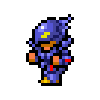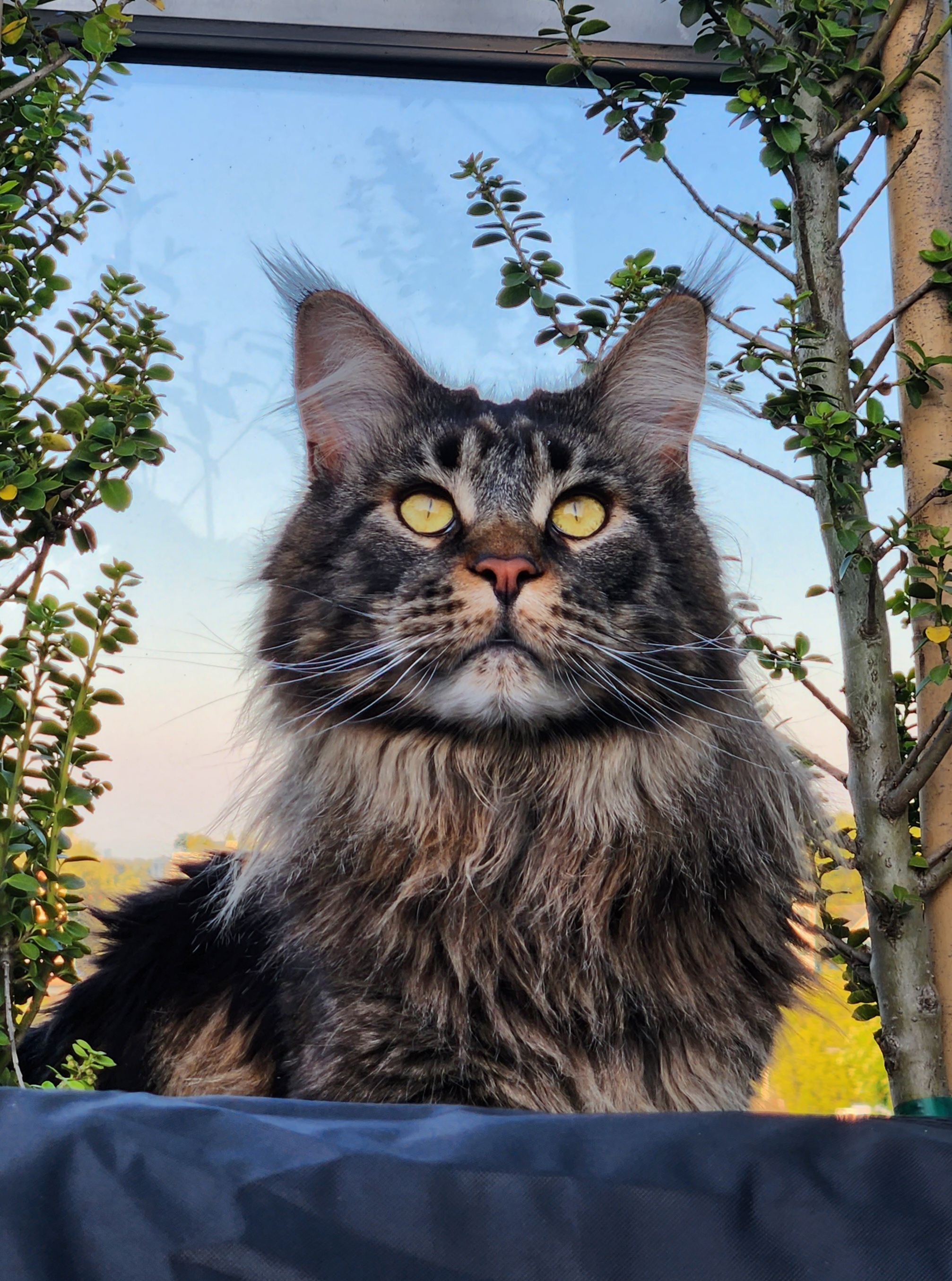I used to print quite a lot of toys for my kids, but I stopped doing that, since it feels mostly like a waste of plastic.
3D printed toys are rarely enjoyable. The toys are usually either not interesting enough (think static, non-movable, single-color figurines like the low-poly-pokemon series), or not durable enough or both at the same time.
My kids liked the printed toys when they got them, but they barely looked at them after like 10 minutes and then they ended up rolling around the house until they broke, usually very soon.
I love 3D printing, I use it a lot for all sorts of things, but toys are just not a very good application for 3D prints, in my opinion. It’s just not worth the plastic.
I printed one of those octopuses with flexible tentacles and my daughter still plays with it like 6 months later. I think she broke the rest.
I agree, but with exceptions. More complicated projects made of several separate parts (especially ones not 100% 3D printed) can be hella cool.
Heat set screw inserts, embedded hardware (nuts, magnets, springs), electronics, etc. can all be used to create toys that can’t be purchased.
I dunno. I agree with this to some extent for sure–I don’t print a lot of the meme models that are everywhere on 3d printing forums. But there are toys that would not exist without 3d printing that I think are pretty great.
I designed a kaleidoscope that reflects things not to tile a plane, but instead to tile the surface of a disdyakis triacontahedron: https://imgur.com/gallery/i-made-kaleidoscope-P4atHey I had to cut the mirrors from acrylic by hand, but the templates for them and the shell that holds them in place are all 3d printed. And that thing is a pretty great toy.
This thing: https://imgur.com/gallery/make-of-cyclidial-iris-by-vergo-henry-segerman-XHN4MC0
is a math sculpture that I didn’t design, just printed, but it’s completely beautiful, and it’s had real staying power as both a toy and a decoration. It sits out on our coffee table all the time, but my niece plays with it every time she’s over here.
And this puzzle box I designed: https://imgur.com/gallery/i-made-puzzle-box-nieces-birthday-U1q408R
was a big hit with her too. I’m not sure if she’ll continue to play with it long-term, but based on my own tendencies as a kid, I think she might end up investigating the mechanisms involved for some time to come.
Things that you could buy at the store you’re generally better off buying at the store. But there are things it’s not economical to mass produce, and it never used to be possible to design and make your own toys. Both ideosyncratic toys and bespoke toys are pretty great uses of 3d printing in my opinion.
That kaleidoscope is awesome! I kinda want to make one.
I can count on one hand how many “toys” I’ve printed. I have printed thousands of useful/needed items, though. That tool is indispensable to me. It’s crazy how far prototyping tech has come.
On one hand I think “wow I want to develop this skill”, on the other hand it seems like quite the time suck of a hobby, with quite a high barrier to entry.
it seems like quite the time suck of a hobby, with quite a high barrier to entry
That’s printer building, modding and maintenance of those
3D printing in 2025 is easy: https://www.youtube.com/watch?v=vBQ-QfcY3Qs
That’s mostly outdated. Sure, you can still get an Ender 3 in 2025 and spend years fixing it up and upgrading it, but you can also spend €200, get an Anet A1 Mini and be done with it.
These things print almost flawlessly out-of-the-box and are dirt cheap.
€200 for the printer, €20 for a roll of filament and you are set.
I’ve learned this as well. But printing parts to supplement existing toys…now that’s been great. Hot Wheels accessories is a really good example…
I really like printing toys that are different sets work together, like duplo train track adapters.
Yeah, I’ve designed and printed extra parts for the wooden Melissa and Doug train sets. No more wobbly bridges for us!
Yeah, brio style train tracks in my case. Or missing parts for existing toys - fixed a lot of my toddler’s toys that way: pieces of shape puzzles, etc
The fragile part is easily fixed by changing the print material and/or infill percentage. You’re right on all other points though.
3d Printing can lose it’s luster over time if you don’t make the effort of learning 3d CAD software and making new designs. -This is my current struggle as FreeCAD is a painful piece of software to use.
The fragile part is easily fixed by changing the print material and/or infill percentage. You’re right on all other points though.
You can make it clunky, but then it’s not appealing any more. That’s why I said that it’s a trade-off between clunky and not interesting on the one side and fragile and not durable on the other side.
infill percentage
Btw, perimeters do a huge amount more for stability than infill.
3d Printing can lose it’s luster over time if you don’t make the effort of learning 3d CAD software and making new designs. -This is my current struggle as FreeCAD is a painful piece of software to use.
I’ve been 3D printing since 7 years now, and I mostly design the things I print myself. For functional parts and prototyping, 3D printing is amazing. I am specifically talking about toys here.
You’re right, and it’s the same reason 2d printers didn’t destroy the book publishing business. It only really makes sense to print things that are either highly situational one-offs for our own purposes or things that someone else created but that aren’t economically justifiable to physically distribute to us.
Commodity items like toys are made to a ridiculous level of cost and process optimization with large and highly sophisticated equipment and molds, which won’t pay for themselves until they’ve sold a hundred thousand toys or more. 3d printers are not competing with that at all. The goal is not to do the same things they already do at scale. The goal is to do the things they won’t and can’t do at scale, that would be cost-prohibitive to set up the process and molds for, that you don’t have time to set up a whole process for because you need it right now. That’s where 3d printing shines. Even companies are using it for rapid iteration because it would simply take too long to keep changing the setup on a traditional process. But it’s never going to replace or “beat” traditional manufacturing and distribution for most things that are done in bulk.
I think it’s actually that the “toys” that can be easily printed are simple novelties, and lots of us get caught up in that. They look super cool online, then you eventually realize that they’re usually worse versions of happy meal toys.
But when there’s a broken part on our train set, or we have a dollhouse that needs another chair, printing is super great.
Printing is easy. Choosing something worth printing is hard.
Most of the stuff people print, is crap that will go in the garbage in a week. I get it, I went through that phase when I got my printer too.
If you learn how to design your own stuff, suddenly it becomes a really useful tool.
I much prefer printing mechanical things, and stuff that does stuff (or fixes stuff) is where it’s at for me. For me to print a static model it has to either be sufficiently hilarious or fit with some inside joke in my household (penguins and ducks feature prominently) or I ain’t doing it.
A word to the wise for anyone printing static models or figurines for your kids, or whatever. Print these in TPU instead of PLA. TPU is functionally indestructible except via heat, can’t shatter, won’t hurt as much if you step on it in the dark, and its moderate amount of squishiness means that it’s significantly less likely to deal damage when younger brothers throw it at older sisters.
I don’t think this is a hot take at all. This is the main reason why I’ve printed fewer than like 5 non-functional prints in my entire life, and most of them were requests from friends. I make lots of custom mounts, replacement parts, custom cases, shims and jigs, custom measuring tools, etc.
I don’t even want to think about all the microplastics created when people sand their builds they’re going to throw in the trash or ignore after a week. Small comfort that most people are too lazy to even do that. People are more careful around wood dust than microplastics, it’s nuts. And like, wood dust isn’t harmless either! Don’t breathe any of it, but definitely don’t breathe the plastics!
It’s fairly minimal compared to the amount of microplastics that go down the drain every time someone washes a load of laundry made from synthetic fibers. At least PLA dust will break down a bit faster than many of the other microplastics.
Synthetic fibers are a fucking nightmare too, just actively sanding it and creating all those microplastics right there, without even washing it away, possibly BREATHING it!! gives me the heebie jeebies after learning about how much plastic is in our brains.
Total agreement.
Btw: If you want to smooth your prints, get a hot-air soldering station. Set it to 300°C and carefully melt the surface. Then use a flat piece of metal and carefully push it to the molten surface. You have to be careful to only melt the outer perimeter without melting the inner structure, so that the shape stays intact. It smooths much better than sanding while at the same time annealing the plastic and creating a much stronger layer bond.
And it’s much faster than sanding.
In general, these hot-air soldering stations are perfect for reworking plastics, not only 3D prints.
The sauce shelf in my fridge cracked apart due to too many sauces being jammed into it. I used the hot-air soldering station to weld the broken pieces together.
I paid around €50 for mine, which is a very nice temperature-controlled one that goes up to 480°C. Can only recommend.










